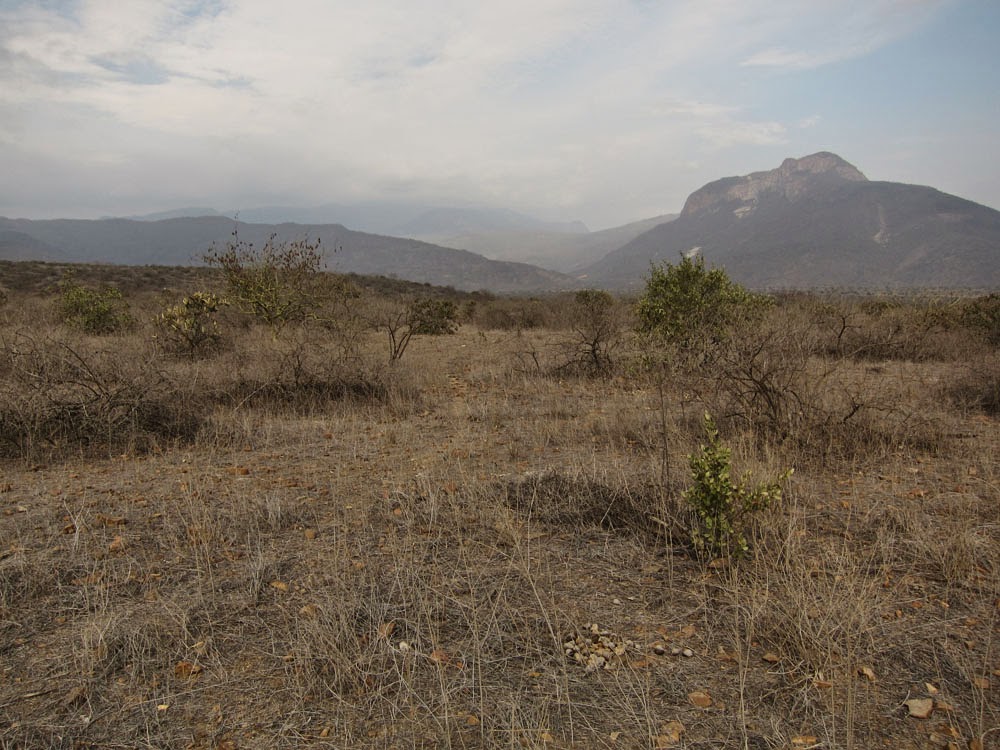If you haven't been keeping up on my
blog the past week or so, I've been trying to bring attention to the
WINGS tour to northern Peru that I'm slated to lead with Fabrice
Schmitt this coming July. Tell your friends about it.
I'm on my way to Costa Rica right now (though a bit waylaid due to Turriabla spewing stuff into the air that jets are apparently allergic to). I'll have plenty of blogging material from Costa Rica, assuming I get there, but in the mean time I have just two more blogs to share from
the delightful Chaparrí Reserve, where the WINGS tour will be staying a couple
days in July. Before I get to some of the other birds, here are the plants
that I photographed there on my stay in early December 2011.
I don't know what they all were, but
this being a tropical deciduous forest, many were at least somewhat
familiar. The dry season is quite harsh here, which does limit the
species diversity, at least locally. One could hike for an hour into
the hills and diversity would explode, but the plants that are
adapted to these lower elevations are fascinating.
Some are quite familiar. This appears
to be a palo verde, Parkinsonia praecox, which is native north
to Sonora, not far south of the Arizona border.
I thought this tree resembled members
of the caper family, and indeed it is sometimes placed in the genus
Capparis. But the most
current name for it seems to be Colicodendron scabridum.
The big fruit is apparently edible and is eaten by the Senchuran Foxes and Spectacled Bears.
Another plant that looked vaguely
familiar was this flower, which I thought was a Cordia species.
But upon closer inspection, those dense, globose flower heads and
five, finger-like sepals under the flowers look rather un-cordia
like.
This one reminded me of Ayenia,
and looking into that family (formerly Sterculiaceae, along with
cacao, but now that whole family is part of Malvaceae) I was led to
Byttneria, probably B.
parviflora.
It was
surprising to see even some smaller flowers in bloom, but most were
near the stream. The very open, flat shape of this morning-glory
flower makes me think Evolvulus,
but there is also the similar genus Jaquemontia.
A
couple flowers in the family Acanthaceae caught my eye. This one is a
Tetramerium.
This
is a Ruellia.
Finally,
I thought this last pink flower was also an acanth, but now I'm not
so sure and think it might be a scroph, which would mean now that
it's in the plantain family (Plantaginaceae, nothing to do with
bananas). Or maybe it is an acanth...
















No comments:
Post a Comment